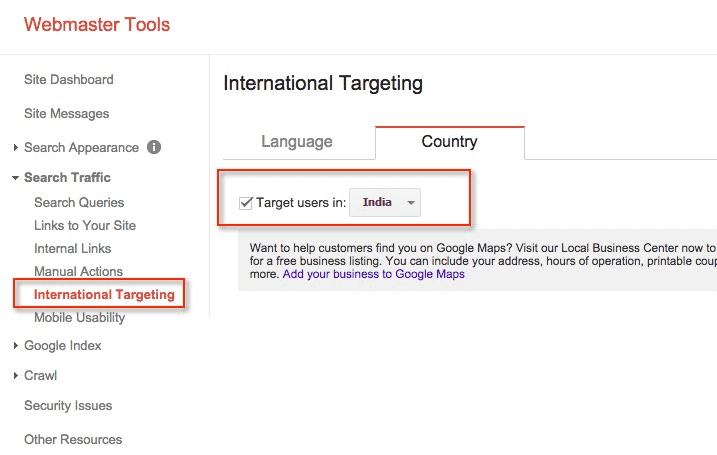If you want to start a website, you must register a domain name with a web hosting provider. A domain name is a unique internet address that consists of a name and extension (such as .com and .in). This extension is also called Top Level Domain (TLD) and is the rightmost part of a domain name. This article lists the factors that influence choosing the right domain extension and how it affects your search engine optimization (SEO).
Different types of TLDs
Domain extensions were initially introduced to facilitate browsing across different domains. Six general top-level domains (gTLDs) were subsequently marketed. This resulted in a different domain extension for different types of organizations. The best known of this is .com. The .com extension was introduced for websites for commercial purposes.
In addition to the general domain extension, there is another type of TLD: the domain extension with a country code, or the country code Top Level Domain (ccTLD). Between 1985 and 1990, the ccTLDs were marketed. A ccTLD consists of the country code of the country for which the extension is intended. In India, this extension is .in, in The United Kingdom .co.uk and in Spain .es.
From 2001, new gTLDs were released, including .info and .pro. That was after the creation of the Internet Corporation for Assigned Names and Numbers (ICANN) in 1998. ICANN is an international nonprofit organization set up to keep the Internet secure and stable.
The list of domain extensions has grown rapidly. There are even domain extensions that use Arabic characters instead of the usual Latin characters. A full list of all extensions (with Latin characters) can be found on the Internet Assigned Numbers Authority (IANA) website.
What SEO Benefits Does The Different Domain Extensions Offer?
Pros and cons of a country code Top Level Domain
Advantage
A ccTLD is the strongest signal to indicate to Google where the origin of the website is. If all other SEO factors are the same, the ‘example.com’ website is better ranked in Google.com than ‘example.in’ or ‘example.co.uk’.
Disadvantage
A disadvantage of a ccTLD is that you need to purchase a new extension for each language. This can be quite costly. In addition, Google’s crawlers (the robots scanning all websites) do not see multiple websites as one website because they have different extensions. As a result, each website must build its own authority.
This authority is the value that Google assigns to a website. The more authority a website has, the longer Google stays on the website to index deeper pages. As a result, higher authority leads to better opportunities to reach a good position in Google. However, this is not the only factor that determines which websites are performing well. Google uses more than 200 signals to determine which results are most relevant.
Pros and Cons of a Generic Top Level Domain
With the advent of new domain names like .pizza, .amsterdam and .club, websites can better distinguish themselves. Using the extension, they can indicate where their website is about. There are many speculations about the advantages and disadvantages of SEO of the new extensions. Matt Cutts, an engineer in Google’s search quality team, says in this message that the new TLDs do not have a better chance to score high in Google than older TLDs or ccTLDs. However, there are several practical examples that make many people think about it differently.
One of these examples is the success story of Coffee.club: A website with a new domain extension. The website climbed to the first page in Google US search results in one week. In many cases, it takes a lot of time to get to the first page in Google US, even if a website has already built up authority. For a new website without authority, it is generally unnecessary work to achieve this in the short term.
The domain name Coffee.club was purchased in November 2014 and received several links from authoritative websites that announced the sale. The backlinks had 80% ‘coffee.club’ as clickable text and not as you would expect ‘coffee club’. One week after the launch, the website was already on page 1 for the term ‘coffee club’. In conclusion, when a gTLD (in part) matches a keyword you want to match in Google, count only links with the domain name in the clickable text. It, therefore, seems that “coffee.club” is interpreted by Google as a “coffee club”. If that’s right, a TLD with a relevant keyword has an SEO advantage over a traditional TLD like .com.
Despite this success story, Google also indicates that there is no benefit (or disadvantage) to having a new gTLD. Google published a similar message on the Webmaster Blog. According to this message, each gTLD has the same opportunity to rank well. With a gTLD, it is possible to specify in Google Search Console which country the website is intended for. This can be done by using international targeting. Please note that when you expand your website with a different language, do not forget to adjust or disable international targeting.
How do you choose the most appropriate domain extension?
Which TLD you have to choose depends on a number of factors. Want to score in Google.com? Then it’s wise to choose the overall top level domain .com. If on the other hand, you only sell products in India, you can choose the .in extension. Google understands that your website is intended for the Indian market and that you want to score better in Google.co.in.
When choosing the right TLD, SEO is often not taken into account. For example, there are websites that buy a ccTLD so the website has a nice name and is easy to remember. By way of illustration: you work for a car damage company and you would like to create a website. Due to domain names being “autorepair.in” and “autorepair.com”, choose the domain name ‘cargarage.in’. Although your visitor understands immediately what your website is about, you’re probably not scoring well on Google.com. This is because you indicate to Google with the .in extension that your website is targeting the Indian market.
Tips for choosing the right TLD
Thus, there are two different types of TLDs to be distinguished:
- A generic TLD;
- A country code TLD.
When your website is targeted to a specific country, it is advisable to choose the ccTLD of that country. In this case, you may need to purchase a new domain with another TLD at any international expansion. Thus, a ccTLD has an impact on your search engine results.
When you choose a gTLD, Google does not think it’s a .com, .pizza, or .museum. GTLDs have as much chance to score well and thus do not affect the search engine optimization of your website. Despite this assertion from Google, there are cases like those of coffee.club, which show that links with only the domain name in the clickable text are counted in Google search results. This is the case when a gTLD (partially) matches a keyword you want to match.
What you need to keep in mind when using a gTLD is that you communicate this to the consumer. Indian people often search for ‘companyname.in’ and American for ‘companyname.com’. If you choose a gTLD, make sure that you communicate well in your communication to your target audience. Finally, note that setting the international targeting to the right country.








